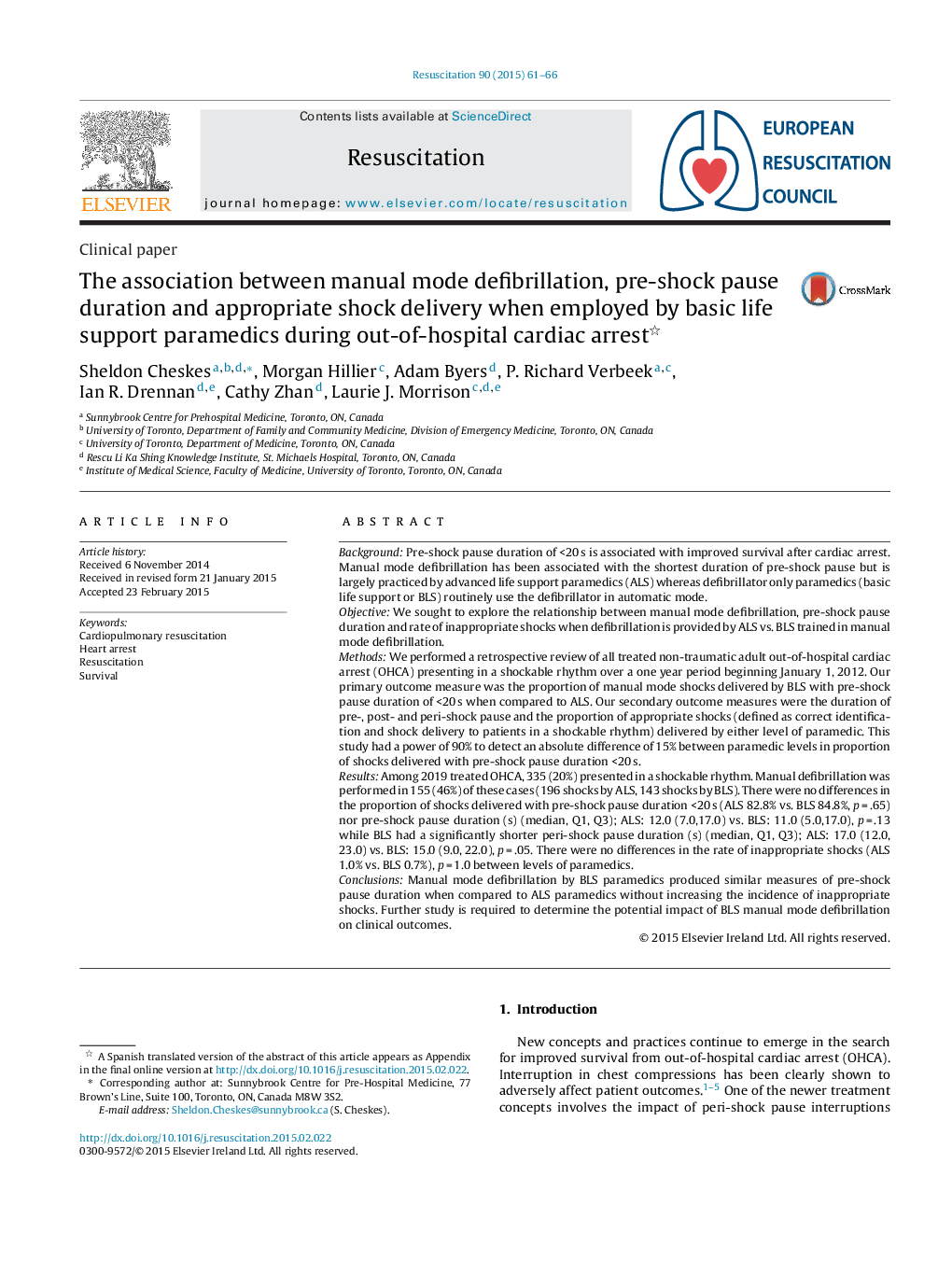| کد مقاله | کد نشریه | سال انتشار | مقاله انگلیسی | نسخه تمام متن |
|---|---|---|---|---|
| 3007938 | 1578994 | 2015 | 6 صفحه PDF | دانلود رایگان |

BackgroundPre-shock pause duration of <20 s is associated with improved survival after cardiac arrest. Manual mode defibrillation has been associated with the shortest duration of pre-shock pause but is largely practiced by advanced life support paramedics (ALS) whereas defibrillator only paramedics (basic life support or BLS) routinely use the defibrillator in automatic mode.ObjectiveWe sought to explore the relationship between manual mode defibrillation, pre-shock pause duration and rate of inappropriate shocks when defibrillation is provided by ALS vs. BLS trained in manual mode defibrillation.MethodsWe performed a retrospective review of all treated non-traumatic adult out-of-hospital cardiac arrest (OHCA) presenting in a shockable rhythm over a one year period beginning January 1, 2012. Our primary outcome measure was the proportion of manual mode shocks delivered by BLS with pre-shock pause duration of <20 s when compared to ALS. Our secondary outcome measures were the duration of pre-, post- and peri-shock pause and the proportion of appropriate shocks (defined as correct identification and shock delivery to patients in a shockable rhythm) delivered by either level of paramedic. This study had a power of 90% to detect an absolute difference of 15% between paramedic levels in proportion of shocks delivered with pre-shock pause duration <20 s.ResultsAmong 2019 treated OHCA, 335 (20%) presented in a shockable rhythm. Manual defibrillation was performed in 155 (46%) of these cases (196 shocks by ALS, 143 shocks by BLS). There were no differences in the proportion of shocks delivered with pre-shock pause duration <20 s (ALS 82.8% vs. BLS 84.8%, p = .65) nor pre-shock pause duration (s) (median, Q1, Q3); ALS: 12.0 (7.0,17.0) vs. BLS: 11.0 (5.0,17.0), p = .13 while BLS had a significantly shorter peri-shock pause duration (s) (median, Q1, Q3); ALS: 17.0 (12.0, 23.0) vs. BLS: 15.0 (9.0, 22.0), p = .05. There were no differences in the rate of inappropriate shocks (ALS 1.0% vs. BLS 0.7%), p = 1.0 between levels of paramedics.ConclusionsManual mode defibrillation by BLS paramedics produced similar measures of pre-shock pause duration when compared to ALS paramedics without increasing the incidence of inappropriate shocks. Further study is required to determine the potential impact of BLS manual mode defibrillation on clinical outcomes.
Journal: Resuscitation - Volume 90, May 2015, Pages 61–66